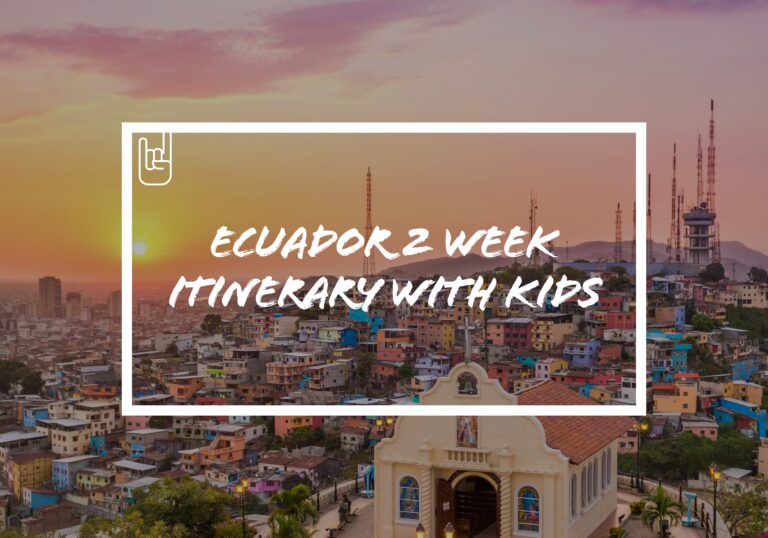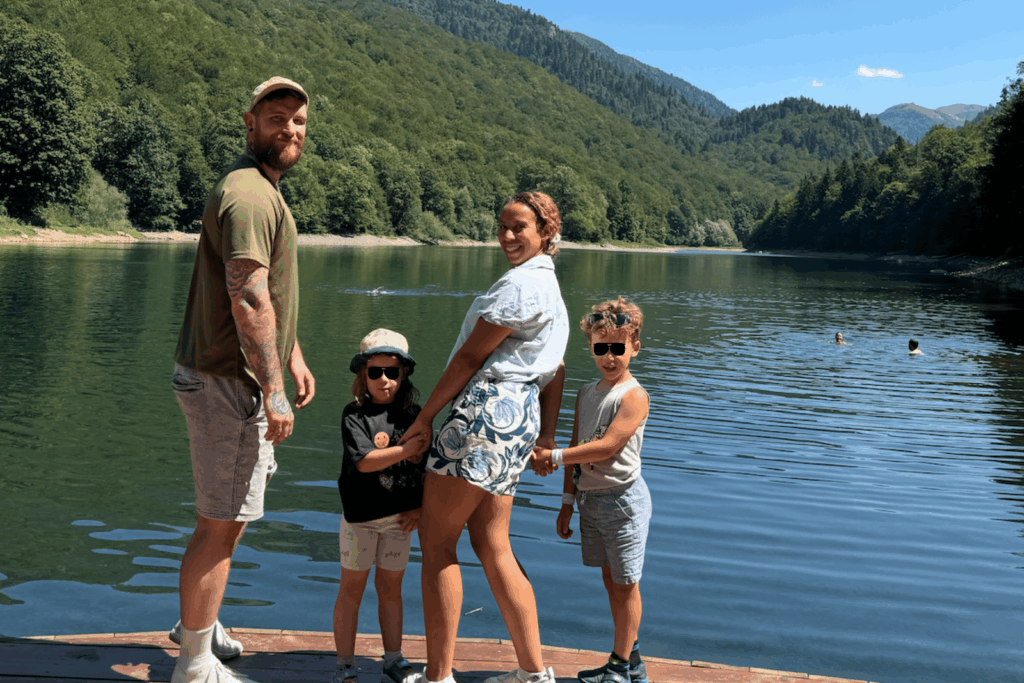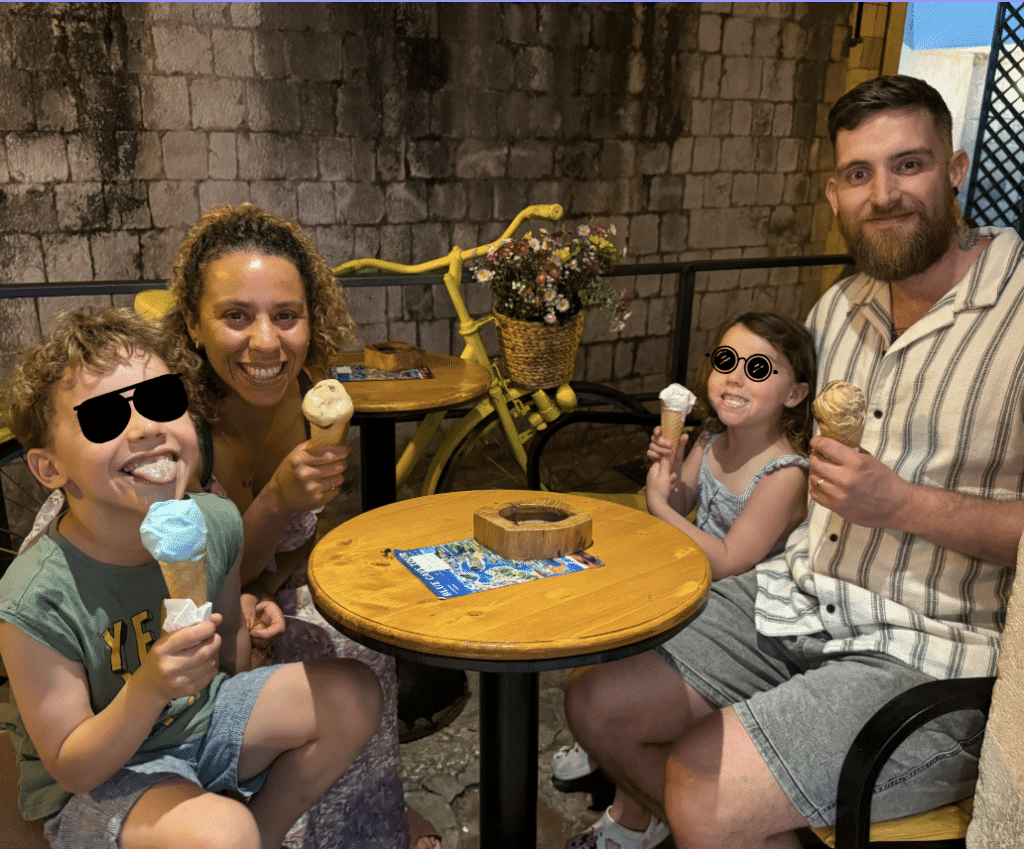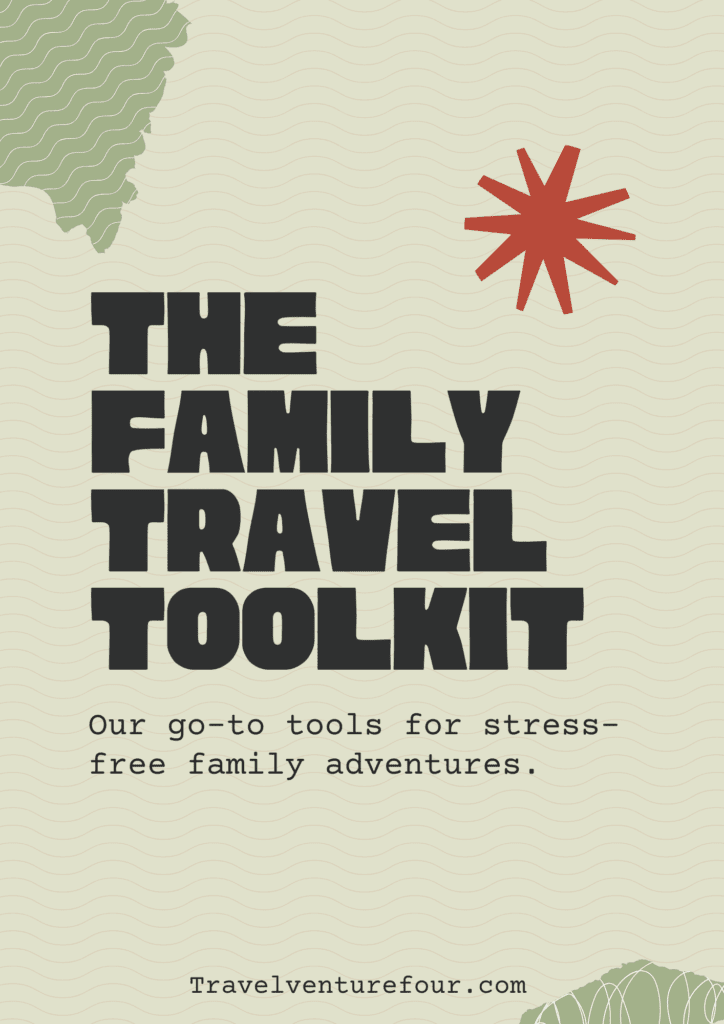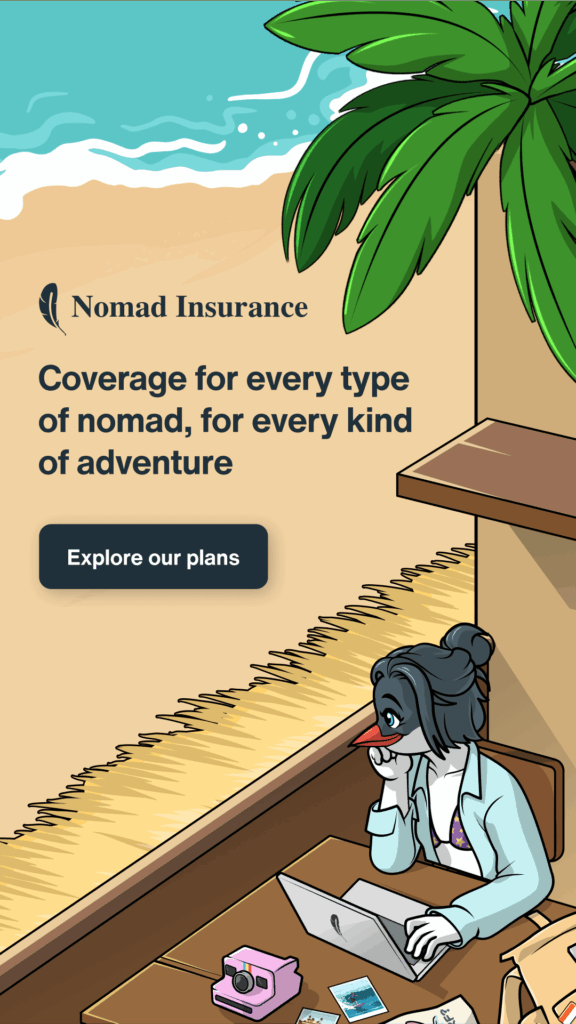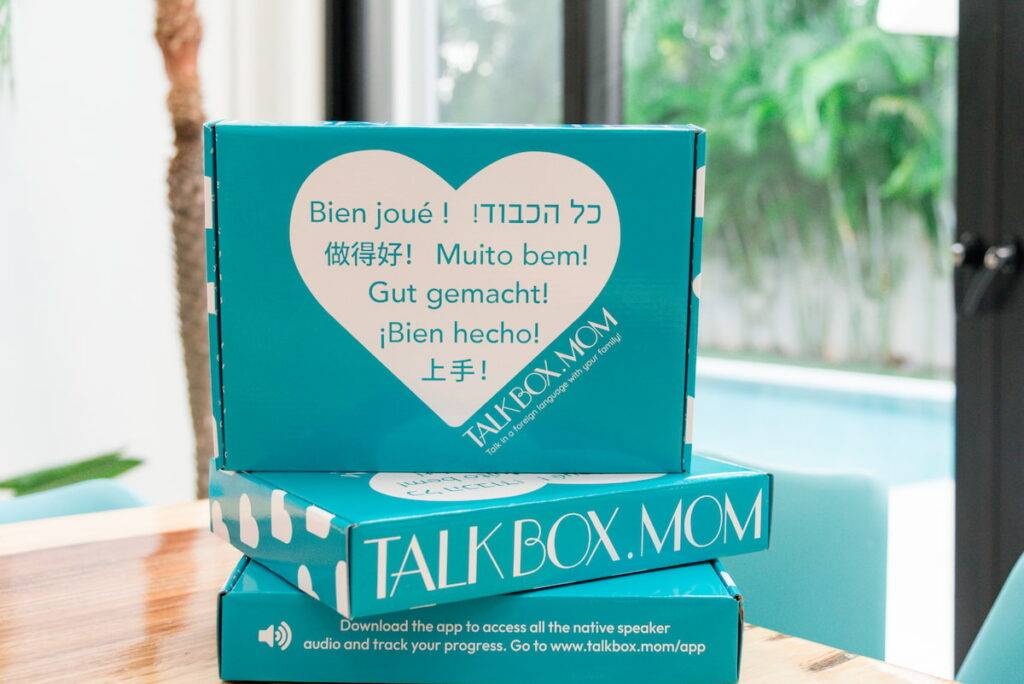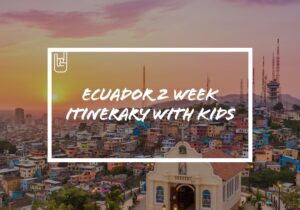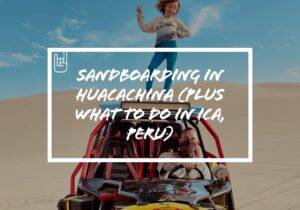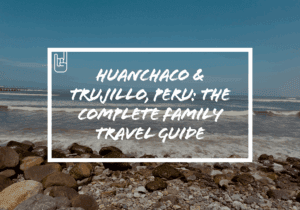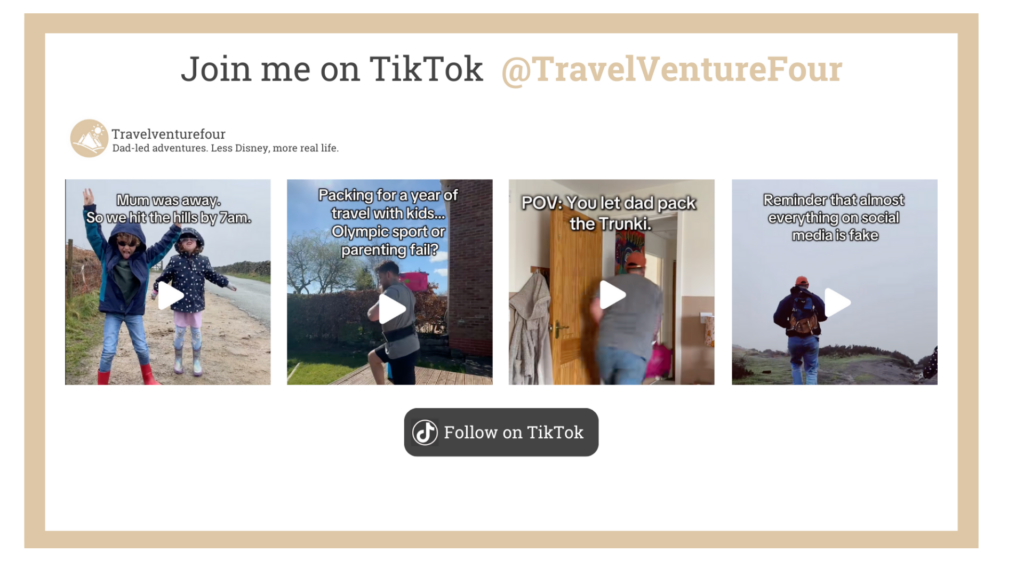Ecuador 2 Week Itinerary With Kids
Ecuador isn’t a “maybe one day” kind of trip. It’s the one you keep thinking about in traffic, the one where the mountains look close enough to touch and every bus ride feels like a gamble and a gift. Two weeks here and you’ll go from cloud forests to cable cars, from waterfalls that shake your ribs to plazas so still you can hear your own thoughts. This route? It’s the one that actually works for families, tested by our family of four for 2 months In August and September 2025
Ecuador hits different. Compact, wild, confusing in the best way, you can wake up above the clouds, eat lunch in a rainforest, and end the day with your shoes drying on a radiator. It’s that kind of trip.
For families, this country works because it’s small. You don’t spend your days trapped on buses or negotiating endless transfers. You actually get to do things, wander, eat, breathe a little. In two weeks, you can string together Quito, Mindo, Baños, and Cuenca, and it feels like a highlight reel stitched together by a slightly chaotic but determined parent (hi).
We skipped the coast. That wasn’t an accident. The beaches have been going through a rough patch, safety-wise, vibe-wise and drug and gang related, so we stuck inland where buses run on time (ish) and the biggest worry is who’s lost their water bottle this time. If you’re itching for ocean air, tack on the Galápagos later; this route keeps you grounded, literally and altitude-wise.
This Ecuador 2 week itinerary for families comes straight from our own 2+ months travelling through Ecuador and knowing what works, where to stay and how long, yes we stayed a month in Baños (was far too long)
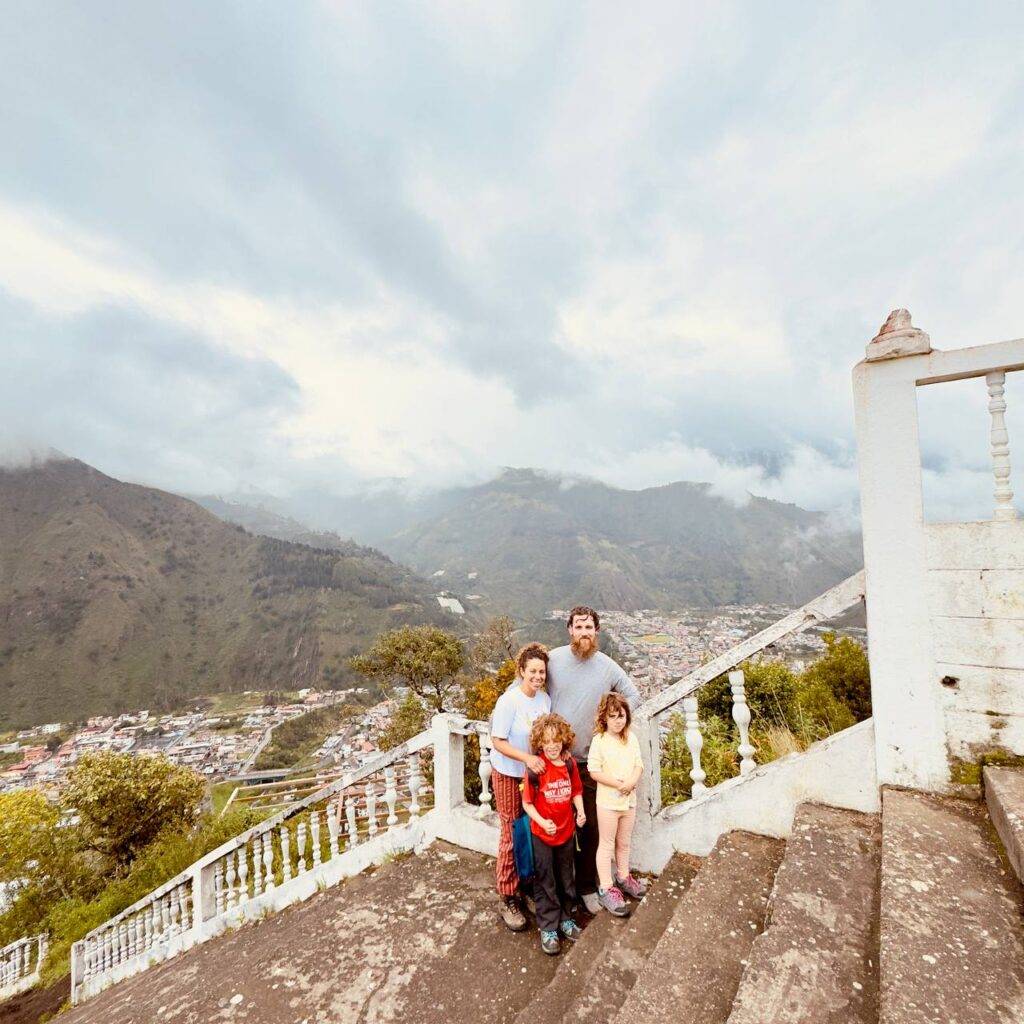
In this ultimate Family Guide to Huanchaco and Trujillo I give tips on best places to eat, where to stay, how to get around and below are some of the tools I use:
🚗 Getting around: You can Rent a car or use Uber to get around.
🗺️ Top day trip: Book great days trips In Ecuador
📱 Data: Buy an Airalo eSIM before you fly.
🛡️ Insurance: Lightweight family insurance coverage
Why You Can Trust This
- When: August–October 2025 (2+ months)
Who: Two adults + two kids (6 & 8) The only family travelling Ecuador this long.
Style: Slow travel on a middle-of-the-road budget (local buses, mid-range stays, zero resort vibes)
Goal: Experience Ecuador’s big landscapes without losing our minds, or our luggage
Quick Facts About Ecuador
| Topic | Snapshot |
|---|---|
| Best Time to Go | June–September for dry skies; November–April is greener but wetter |
| Altitude Check | Quito – 2,850m |
| Family Daily Budget | $60–$110 (includes meals + stays) |
| Example Costs | Almuerzo $3–4 pp • Uber ride $3–5 • Bus Quito→Cuenca $15–20 pp |
Who This Trip Is For
Families with school-age kids who can handle a bit of altitude and a lot of curiosity.
First-timers who want a mix of culture + nature without juggling ten destinations.
Those who’d rather skip the current coast drama but might dream of a Galápagos add-on later.
How to Use This Guide
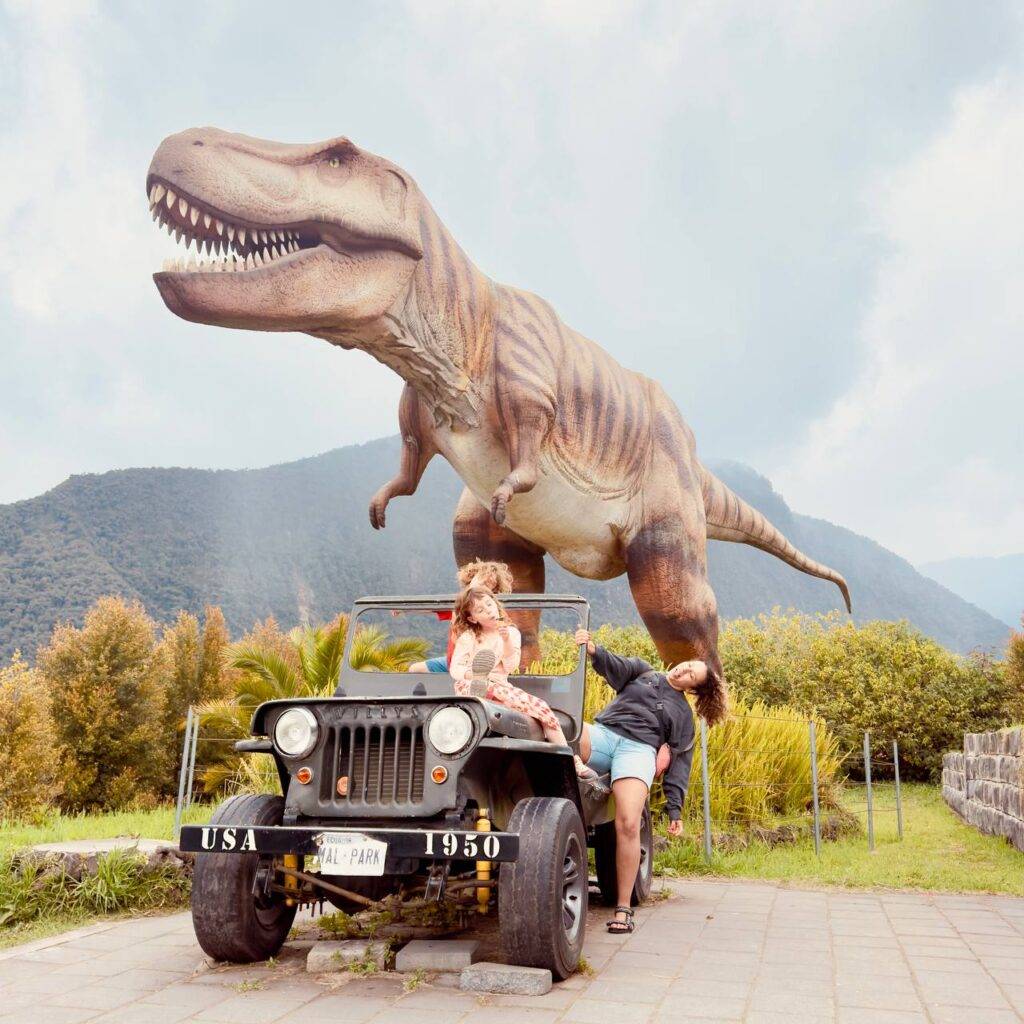
You can follow it exactly, or treat it like Lego, snap off the pieces you need and rebuild your own version.
Each base works as a self-contained 2–3-day “module.”
Three ways to pace it:
Standard: The actual route (14 days, kid-friendly tempo)
Slow: Add market mornings, nap breaks, and maybe a rest day after each move
Adventure-leaning: More hikes, ziplines, and “what could go wrong?” moments (Include longer in Baños)
Ecuador rewards curiosity and flexibility. The buses are cheap, the food’s honest, and the scenery does half the storytelling for you.
What this itinerary does is keep your family’s energy bank in the green—no 12-hour rides, no 5 a.m. tours. Just steady rhythm, local flavour, and enough space for serendipity. The longest journey on here is Baños to Cuenca.
Days 1–3: Quito (Arrive & Acclimatise)
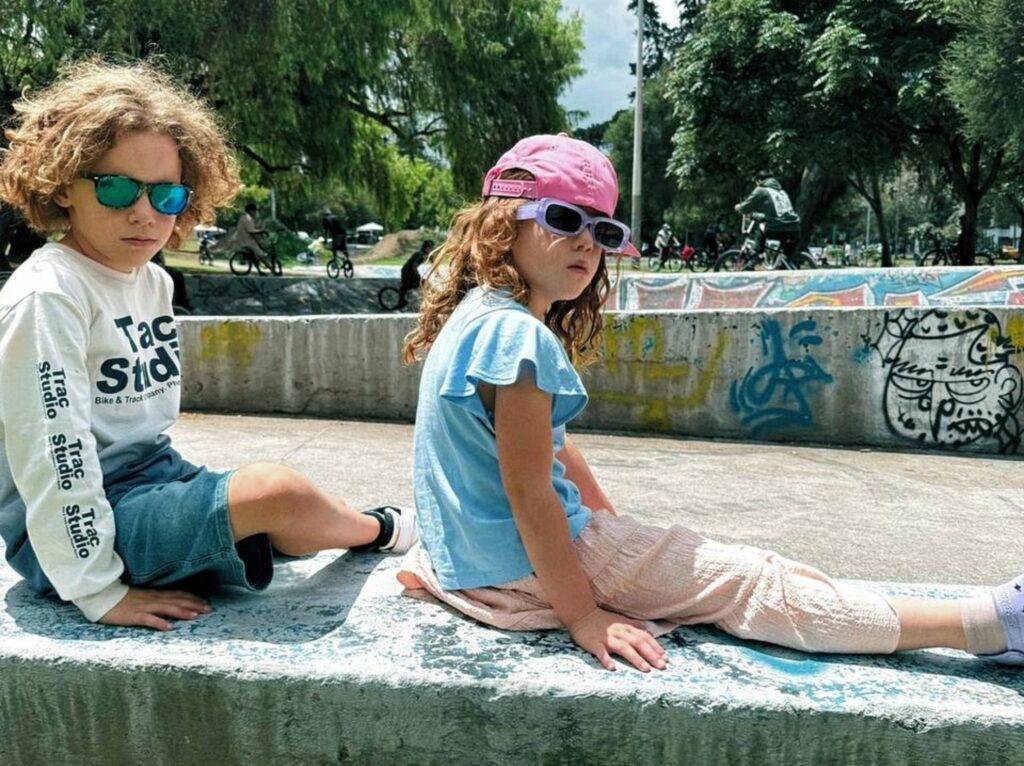
Quito isn’t the kind of city that lets you ease in gently.
You land, step out, and boom, your lungs remember you’re 2,850 meters above sea level. The air feels thinner, the light sharper. It’s beautiful and disorienting at once. Kids notice it too, though usually between giggles and snack demands.
Day 1 - Base and settle
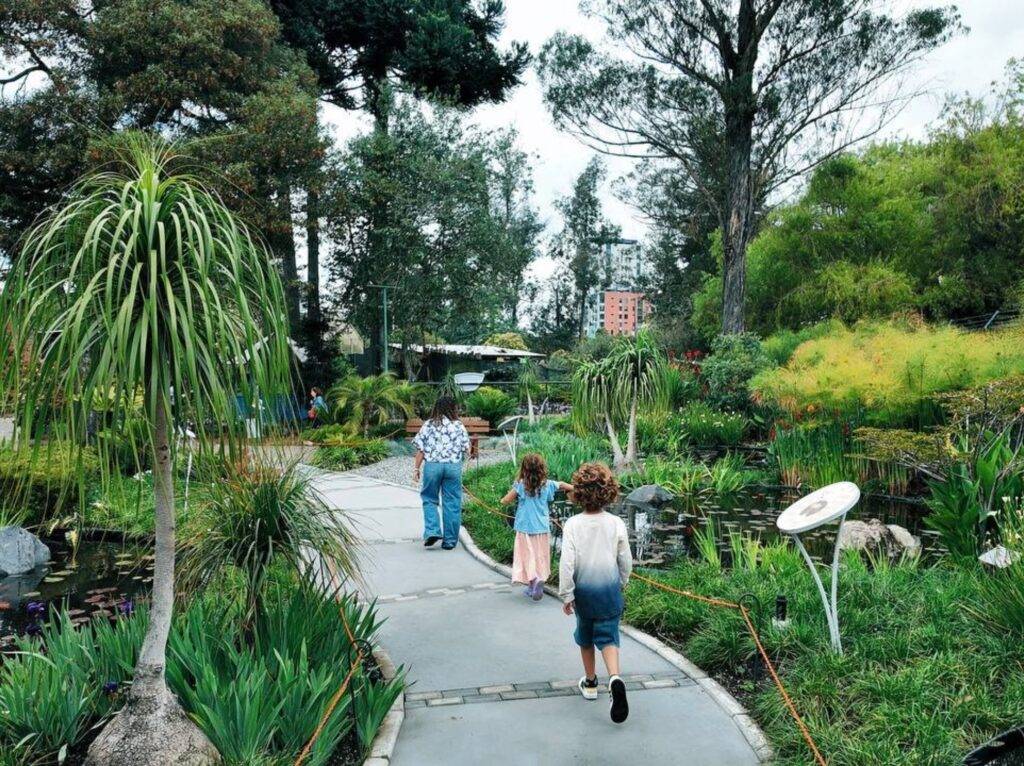
Get through customs, grab a local SIM card (Claro or Movistar, $5–10 with data), and head for your stay.
Our advice? Don’t try to “do” anything major on day one. Jet lag + altitude = short fuse.
We stayed near La Carolina Park, which turned out to be the best parenting decision we made all week. It’s green, huge, and full of distractions, botanic gardens, bike paths, snack stalls, and enough space for kids to chase each other without bumping into street vendors.
Grab a light dinner early (almuerzo spots usually serve into the evening), and call it a night before the yawns turn into tears. If you’re wired, stroll to a bakery for pan de yuca, soft, salty, and perfect with hot chocolate.
Day 2 – Quito’s Historic Heart
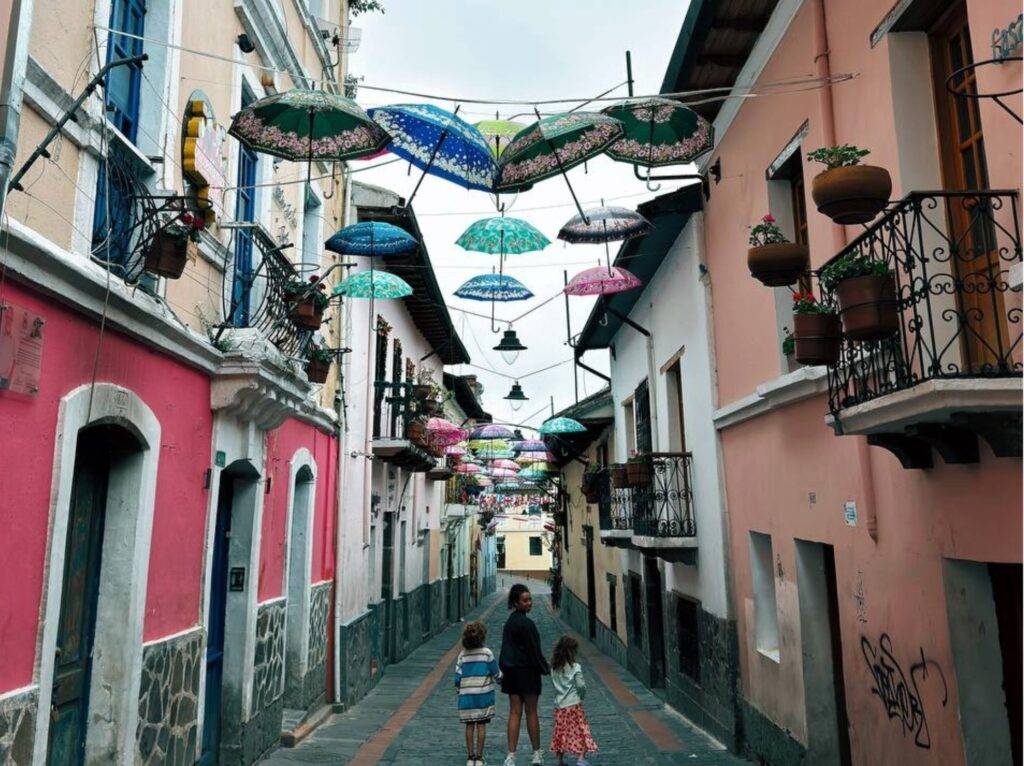
The old town feels like stepping into a history book someone left open in the Andes, Plaza Grande, Calle La Ronda, and balconies draped in flags.
Start late; mornings are for easing in.
Take a slow wander through Plaza Grande, peek inside the cathedral, and let the kids toss crumbs to the pigeons. Then follow the sloping cobblestones down La Ronda, where street musicians play and shopkeepers hand out tiny samples of chocolate or coffee.
Lunch? Mercado Central. Plastic chairs, cheap soup, the best fruit juices you’ll ever taste. (The kids still talk about the $3 pineapple smoothie.)
If everyone’s flagging by afternoon, catch a taxi up to the Quito Observatory, small, quirky, and quiet, with telescope domes and views that make the altitude headache worth it. Stay until dusk, when the city lights flicker on like sequins.
Day 3 – Above the Clouds (Teleférico + Cruz Loma)
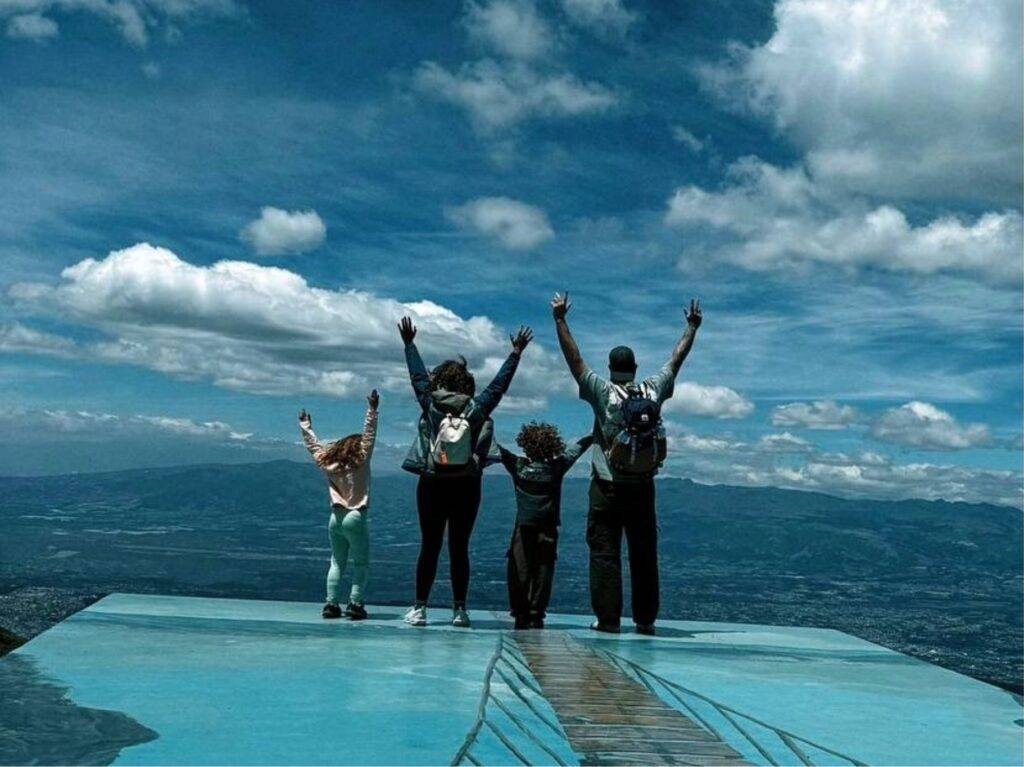
By now, your lungs are catching up. Time to go higher.
Take the Teleférico, the gondola that lifts you from city chaos to mountain silence in ten minutes flat. Go mid-morning, too early and the altitude hits hard, too late and clouds swallow the view.
At the top, you’re standing over 4,000 meters. Let the kids run a bit, then stop for cocoa at the café near Cruz Loma. The air feels different here, thin, electric.
If the energy dips (and it will), skip hiking further and head back down. On the way home, detour to the Museo Interactivo de Ciencia, half museum, half playground, with hands-on experiments that buy parents thirty blessed minutes of sitting down.
Dinner: local almuerzo joint or pizza near your apartment.
Quito’s food scene is quietly good, but simple wins early in the trip.
Where to Eat in Quito
- Almuerzo spots: anywhere locals queue, $3–4 for soup, rice, meat, juice.
Coffee: Isveglio near La Floresta (smooth espresso, play corner).
Treat: bakery churros, or ice cream from Fior di Latte in La Carolina.
Tap water is chlorinated, technically safe, but tastes like a swimming pool. Bring a filter bottle or drink bottled water.
Where to Stay in Quito
Two solid options:
Quiet residence near La Carolina Park: quieter, modern, easy park access.
Old Town: full of charm, but narrow streets + traffic can test patience.
We chose to stay at a appartment called the Quiet Residence above, it was a great appartment to base in Quito, close to La Carolina and easy to get around.
End of Day 3 takeaway:
You’ve survived the altitude, found your rhythm, and maybe, just maybe, started calling almuerzo “lunch” without thinking. Quito’s the kind of city that tests you early, then rewards you for sticking around.
Also read: Best Things To Do In Quito With Kids
Days 4–6: Mindo (Cloud Forest Exhale)
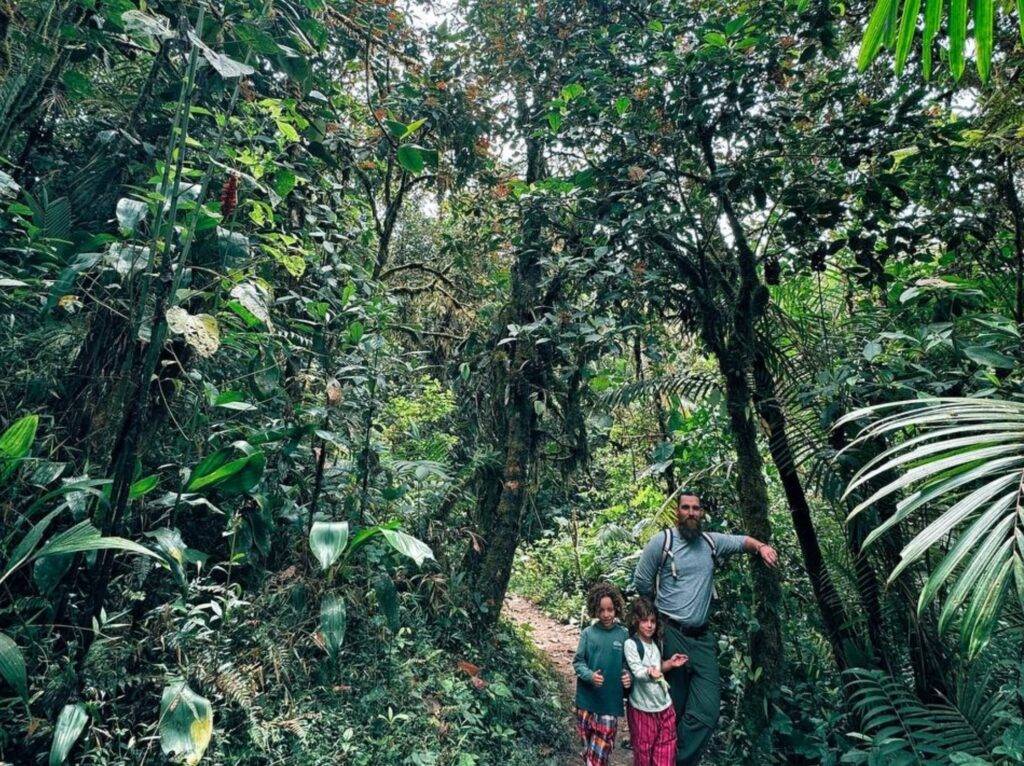
You’ll feel it the second the bus starts winding out of Quito, that shift from altitude buzz to rainforest humidity. The air grows heavier, greener, louder. Two hours later, you’re in Mindo, a tiny town tucked inside the cloud forest, smelling faintly of wet soil and cocoa beans.
After a few days of city altitude, Mindo feels like an exhale you didn’t know you needed.
Day 4 – Getting There & Finding Your Rhythm
The trip from Quito to Mindo is short enough to pretend you’re still on your way to brunch. Two to two and a half hours by bus or taxi, depending on traffic. The road twists through misty hills that make even the most screen-obsessed kid look up for once.
Once you arrive, don’t rush. Drop bags. Breathe. The cloud forest hums all around, crickets, frogs, faraway thunder.
If you’re staying in town, wander toward the Mariposario de Mindo (Butterfly House) in the afternoon. Hundreds of butterflies swirl around, landing on heads, backpacks, sometimes even cameras. It’s calm chaos, perfect for kids.
Evening: find dinner at El Chef or El Sitio, where “slow service” just means “you’re in Mindo now.”
Sleep early. The rainforest doesn’t wait for you to adjust, it starts singing before sunrise.
Day 5 – Waterfall Day
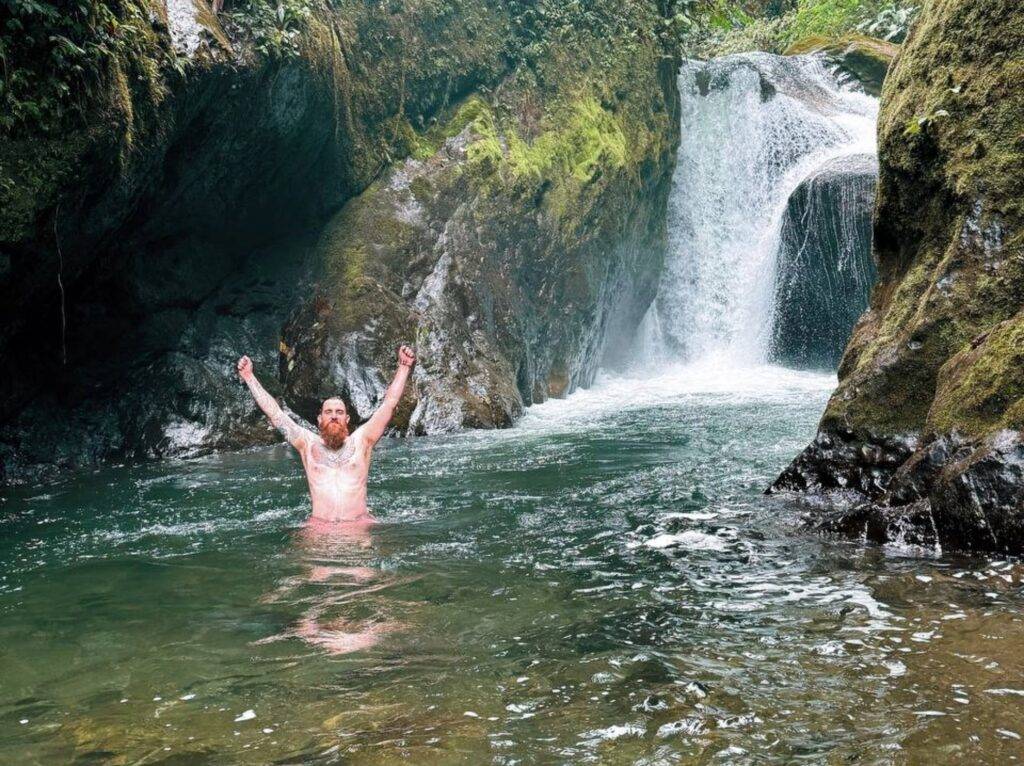
This one’s a family favorite.
Grab a taxi or hop in a tarabita (cable car) to cross over the forest canopy, it’s short, scenic, and just scary enough to make everyone gasp and laugh at the same time.
From there, you can walk short trails to a series of waterfalls, each one a little different. The big one, Pailón del Diablo’s cousin, Cascada Nambillo, has a natural pool at the base where older kids can splash safely.
You could hike longer, but you don’t need to. Cloud forests have a way of slowing you down; twenty minutes can feel like an hour in the best possible way.
Afternoon: reward yourselves with a chocolate tour at El Quetzal. It’s part factory, part lesson, part sugar high. Kids love watching the beans turn into bars, adults love the samples.
Evening: grab something hearty, maybe trucha (trout) Mindo’s signature dish. Then sit outside and listen. The rain usually rolls in after dark, heavy and rhythmic, perfect for that “we’re really here” moment.
Day 6 – Trails, Frogs, and the Fine Art of Doing Nothing
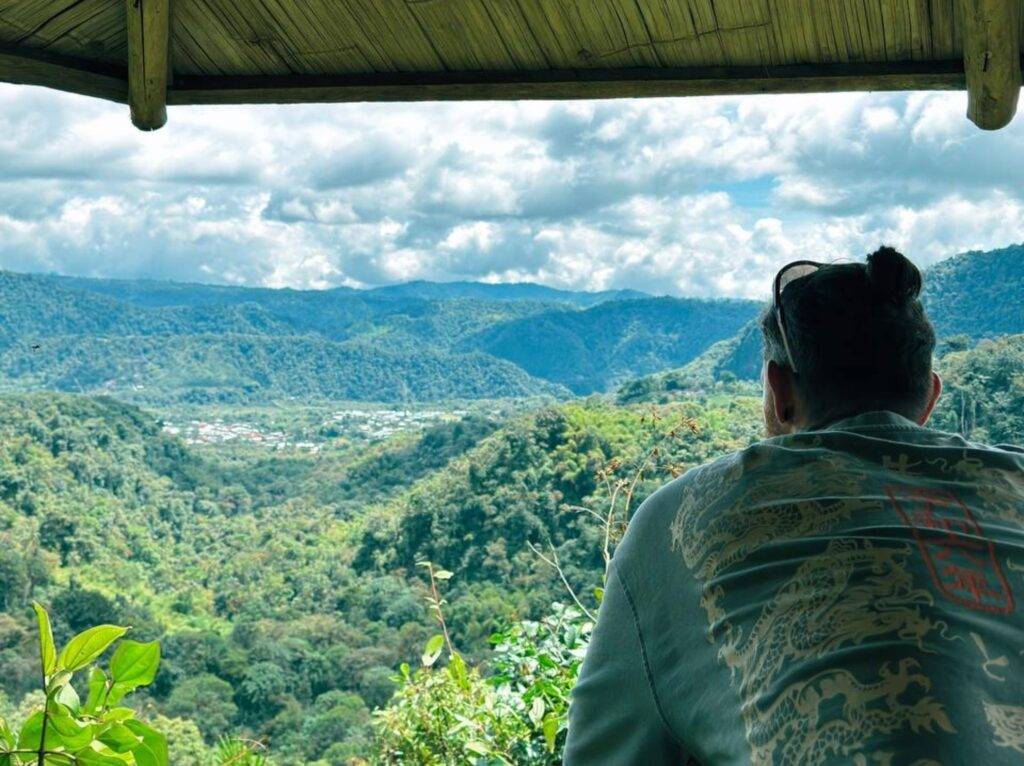
If you wake early, head to the Yellow House Trails. They’re on private land but open to visitors for a small fee. Early morning means bird calls, dew-soaked leaves, and occasional toucans if you’re lucky. Bring shoes with grip, the mud has personality. We walked 18KM and took us around 4 hours.
Later, just wander. Mindo is one of those towns built for aimless afternoons. Cafés with hammocks. Kids chasing dogs. Backpackers balancing banana pancakes.
By nightfall, you’ll hear offers for night walks, guided strolls through the dark to spot glass frogs, insects, and the occasional snake. They’re safe, fascinating, and worth doing once (bring torches and realistic expectations, it’s nature, not Disneyland).
Where to Eat in Mindo
- Coffee Lodge / Mindo Coffee: solid espresso, decent Wi-Fi (when the forest allows).
El Quetzal: for chocolate and comfort food.
Dragonfly Inn Café: riverside tables where kids can spot hummingbirds while you eat.
By the end of day six, you’ll forget what altitude felt like. Your hair smells faintly of rain, your shoes are permanently damp, and you’ve started timing outings around thunder. It’s the good kind of tired, the kind that comes from actually being somewhere instead of just seeing it.
Where to Sleep in Mindo
We stayed 7 days at Biohostal Mindo, big but quiet hostal located inside Mindo with close walkign distance to everything you need in Mindo.
Also Read: Mindo Cloud Forest With Kids
Days 7–10: Baños (Hot Springs & Waterfalls)
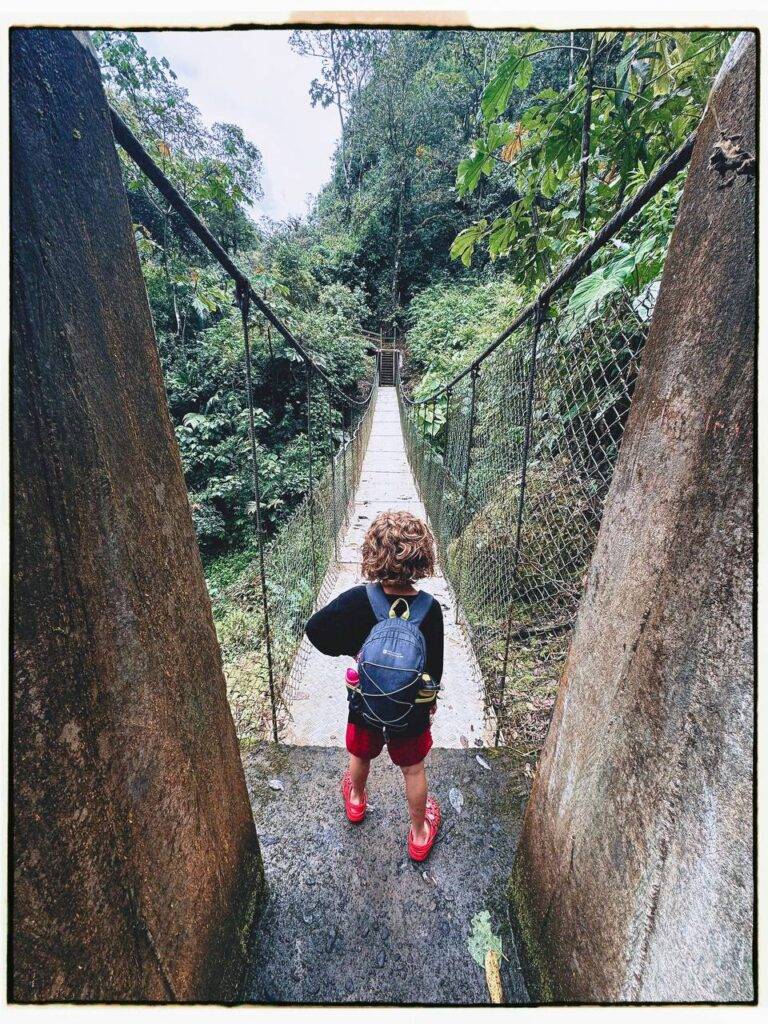
Leaving Mindo means trading mist for motion. The road snakes through highland farmland and dusty switchbacks, eventually dropping into Baños de Agua Santa, a valley town that feels equal parts adventure park and small Andean spa village. The air is warmer, the streets louder, and everything smells faintly of sugarcane and diesel.
This is Ecuador’s playground. For families, it’s the perfect balance: enough comfort to breathe easy, enough chaos to keep everyone wide-eyed.
Day 7 – Arrival & Evening Soak
The trip down from Mindo takes roughly 3–4 hours (longer if you’re connecting via Quito or Los Bancos). The moment you roll into Baños, you’ll feel the difference, humid, green, alive.
Check in, drop the bags, and head straight for the Termas de la Virgen hot springs. Yes, they’re busy, and yes, the water’s a weird golden colour but that first plunge after a travel day is pure medicine.
Pro tip: go in the early evening when locals arrive; it’s social, noisy, and oddly soothing. Kids love the contrast, hot pool, cold mist, neon lights flickering off the steam.
Dinner nearby, simple grilled trout, rice, maybe a juice from a street stand. Baños doesn’t do subtle. It does “alive.”
Day 8 – Ruta de las Cascadas (Waterfall Route Day)
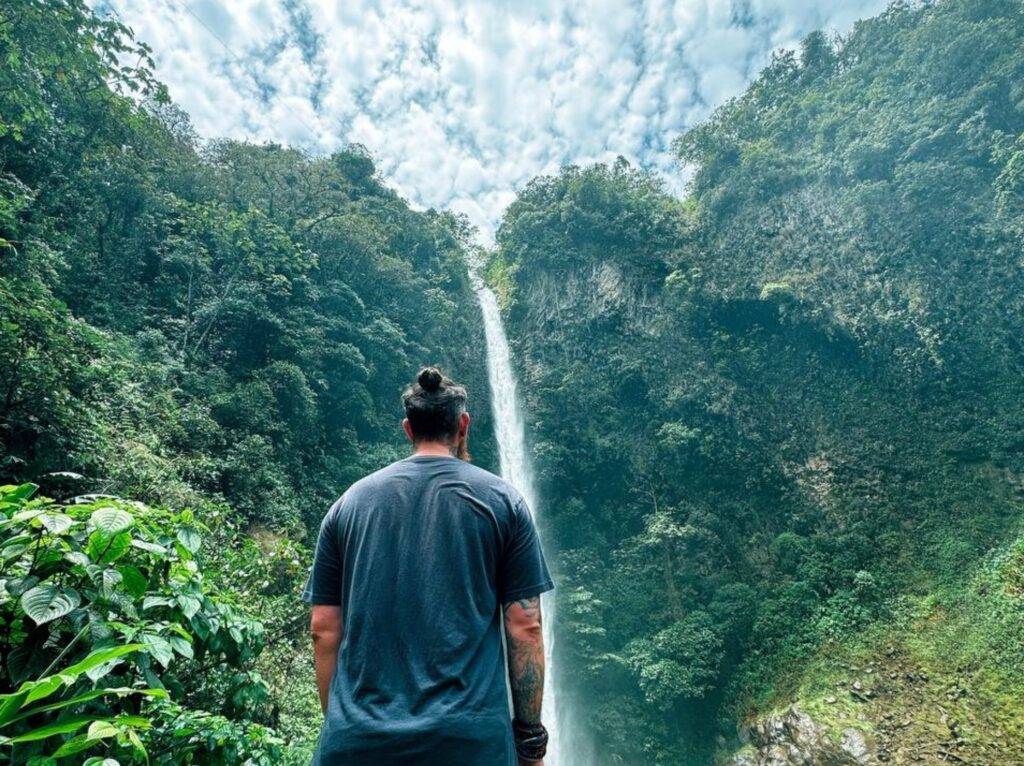
This is Baños’ main event, and it’s glorious chaos. You can rent bikes, hop on a chiva (open-sided party bus), or hire a taxi for the day. We went with a jeep romantic, more realistic for small kids.
The road hugs the Pastaza River, cutting through tunnels and cliffs dripping with vines. Every few minutes, there’s another waterfall with a name that sounds like a dare, Manto de la Novia, Agoyán, and the mighty Pailón del Diablo.
Pailón’s the big one. You’ll feel it before you see it, roar, mist, the rumble in your chest. Take the stairs down, hold the rail, and let the kids squeal when the spray hits. It’s not dangerous, just loud and unforgettable.
Lunch at the small café above, empanadas, hot chocolate, and that shaky, happy kind of exhaustion that means the day worked.
Day 9 – Viewpoints & Cable Cars
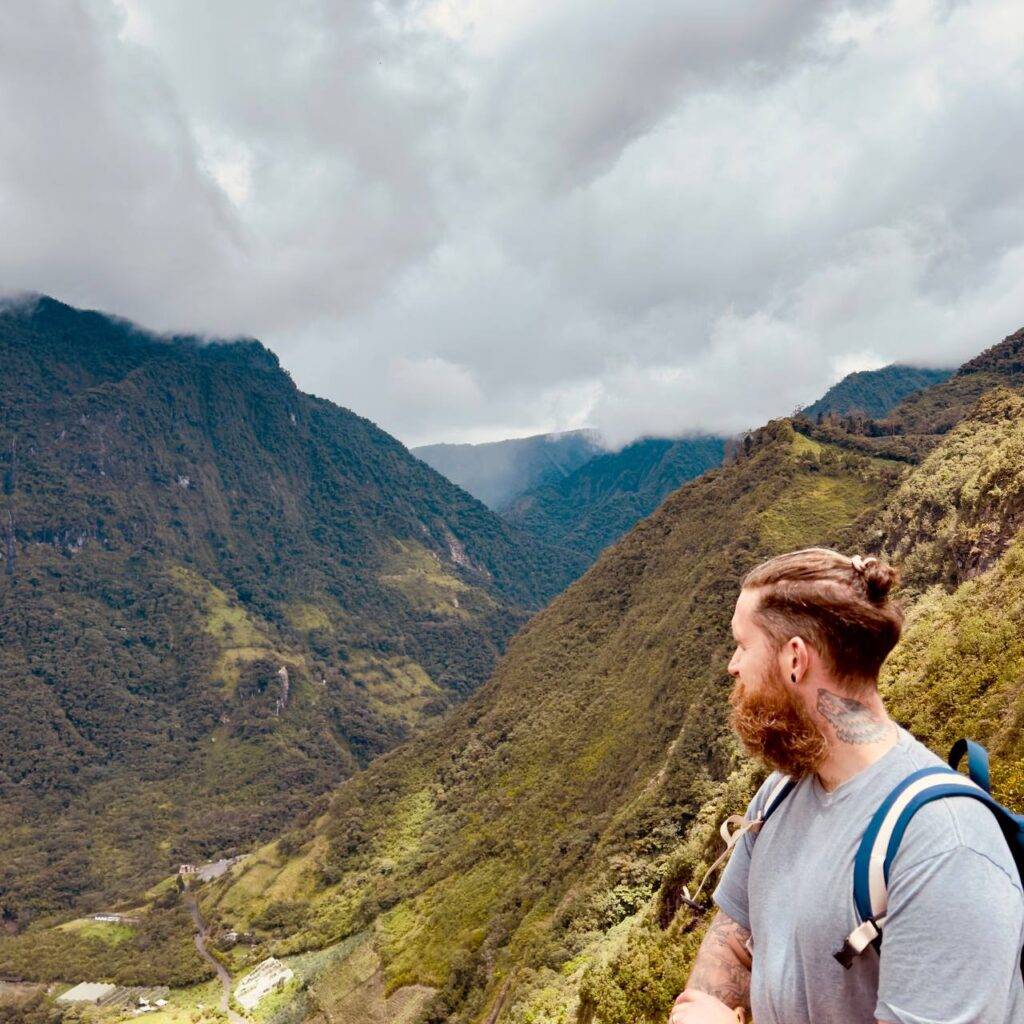
Slow start. Trust me, you’ll need it.
Baños sits in a bowl surrounded by mountains, which means every direction leads to a viewpoint. If you’ve got small kids, skip the death-defying swings for now (save Casa del Árbol for older ones). Instead, climb the La Virgen steps, a gentler trail with lookouts and shrines or take a taxi up to one of the contour cafés.
Our pick: Café del Cielo a ten-minute ride, endless views, decent cappuccino, or the second La Virgin route (3KM) Takes you past the cafe,
Later, cross the valley via cable car to Manto de la Novia, quick thrill, cheap ticket, big smiles. If you’re lucky, a rainbow appears over the gorge, and everyone forgets how tired they are.
Evening: wander the main strip, grab sugarcane juice or taffy from one of the old-school pullers in doorways. It’s hypnotic, sticky, slightly unhygienic, and completely Baños.
Day 10 – Choose Your Adventure
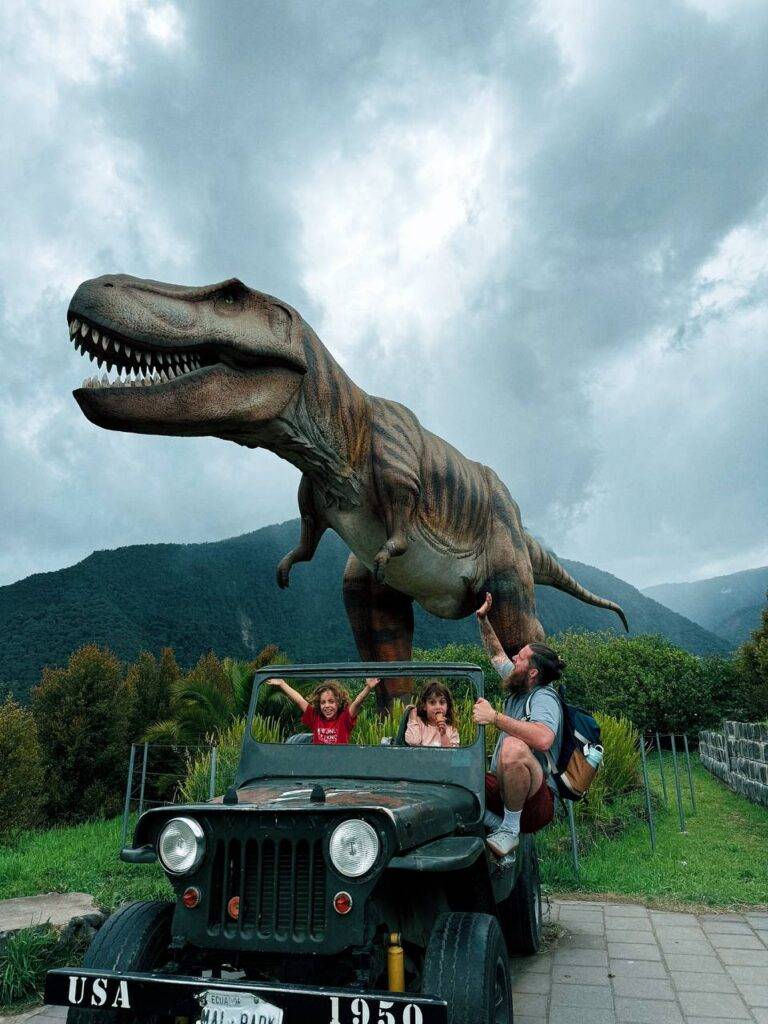
This day’s yours to customise, depending on how brave (or tired) your crew feels.
Options:
Zip-lining: High, safe, and absolutely worth the scream.
Tubing: For older kids; cold water, big laughs.
Amazon Day Trip: Easy launch point from Baños, expect jungle edges, wildlife, and long naps afterward.
Or just skip the adrenaline entirely and head back to the hot springs for one last soak.
Afternoon laundry run, slow dinner, maybe catch a street musician near the plaza. By now, you’ll realize Baños isn’t subtle, it’s bright, loud, full of life and after the calm of Mindo, that’s half the fun.
Where to Eat in Baños
- Honey Coffee & Tea: calm vibe, great brownies.
Milo’s Café: pancakes that cure travel fatigue.
Almuerzo spots: $3–4, look for full tables and noisy kitchens.
Where to Sleep in Baños
Central stays work best, everything’s walkable, and laundry shops are everywhere. If you’re here longer, look for small family-run hotels with kitchenettes.
By the end of Baños, everyone’s hair smells faintly of sulfur and fried dough. You’ve ridden cable cars, survived the spray, and probably overpacked snacks for the tenth time. But this town has that effect, it leaves you wide awake and kind of proud of yourself for keeping up.
Also Read: Baños Ecuador With Kids
Days 11–14: Cuenca (Culture Without Chaos)
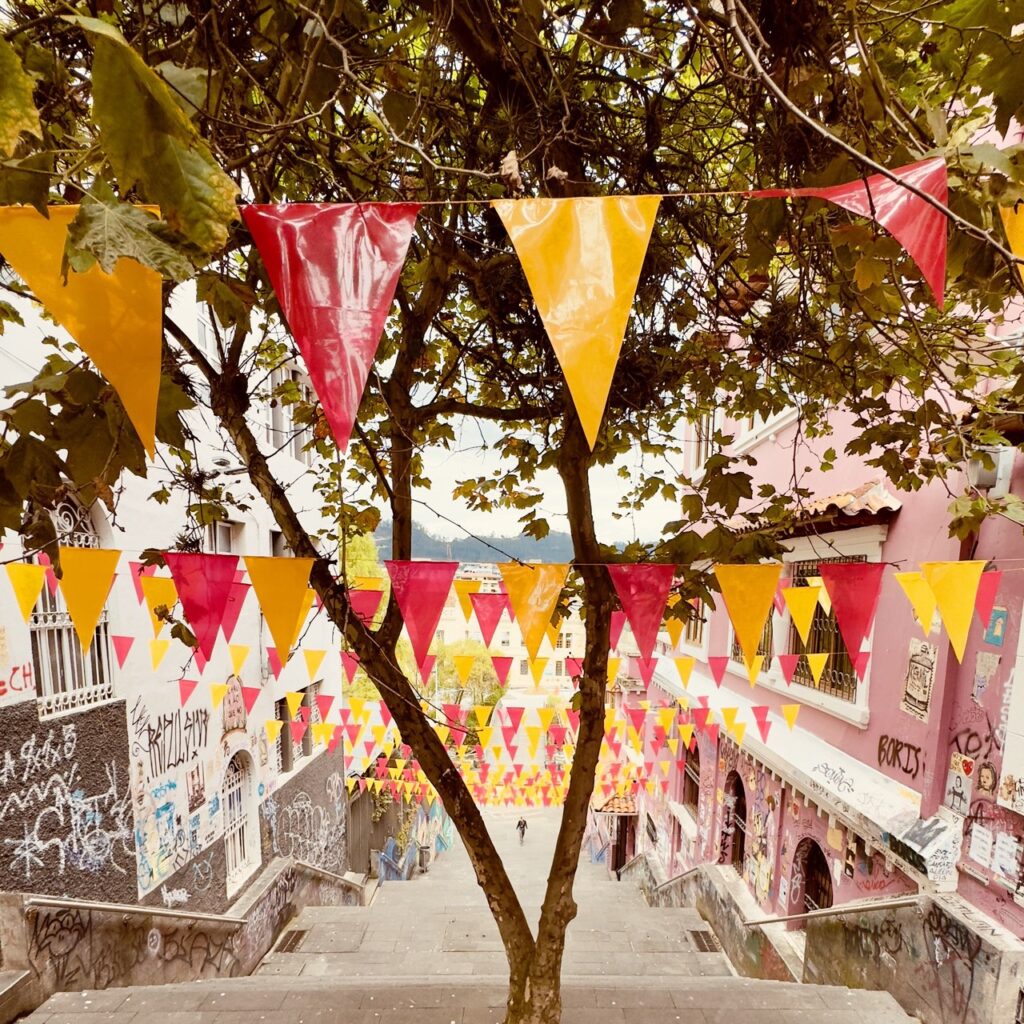
After a week of buses, steam, and waterfalls, Cuenca feels like someone turned the volume down. The air’s crisp again, the pace deliberate. It’s a city, yes, but one with cobblestone streets, clean rivers, and locals who still stop to chat mid-errand.
For families, it’s a gift. Playgrounds instead of zip-lines. Cafés instead of chaos. You could spend a week here just catching your breath and maybe realizing that this, right here, is why you came.
Day 11 – The Long Ride South
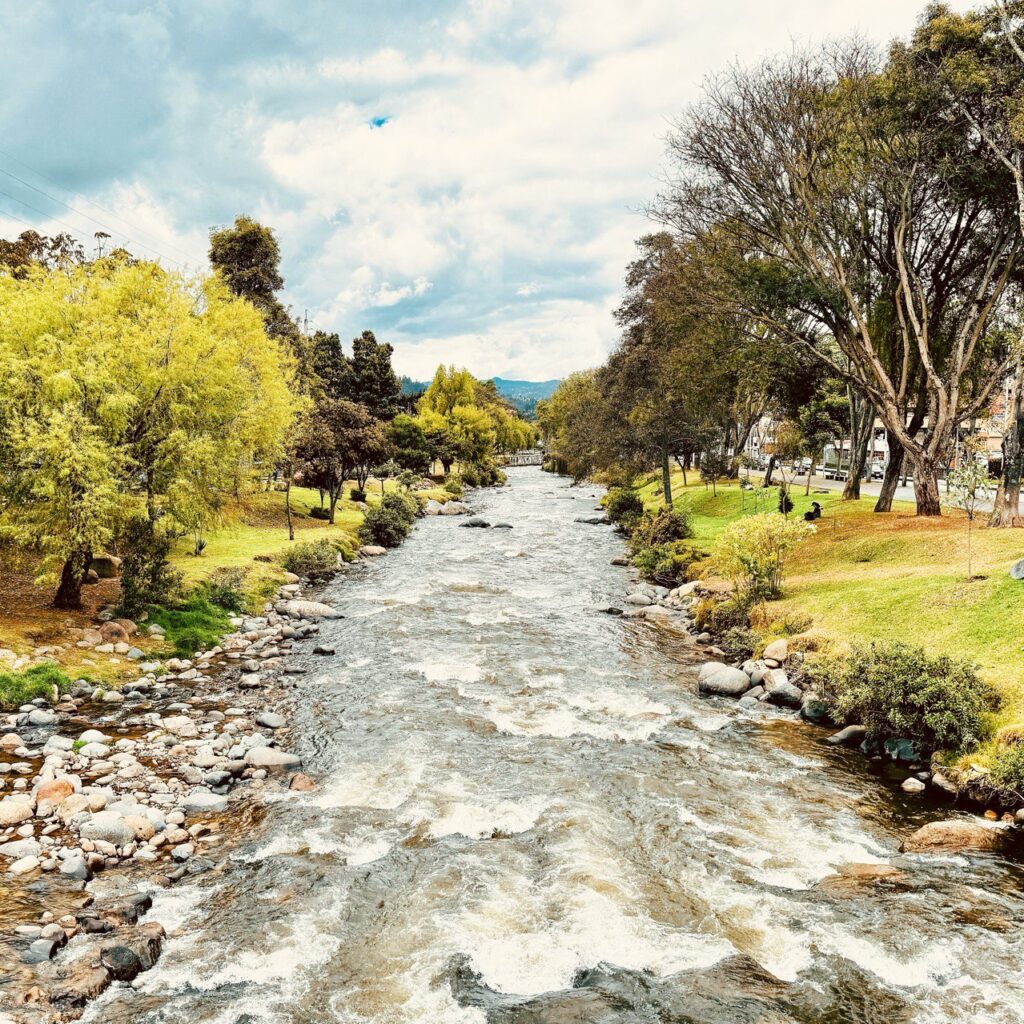
The journey from Baños to Cuenca is a long one. Six to eight hours, give or take, depending on stops.
You’ll pass volcano views, patchwork farms, and roadside stands selling cheese balls you’ll wish you’d bought more of.
Pack snacks, download something for the kids, and settle in. It’s a travel day, pure and simple.
Once you roll into Cuenca, stretch your legs along the Río Tomebamb, wide paths, playgrounds, street art, and locals walking dogs in the golden light. It’s the perfect way to shake off bus legs before an early dinner.
Sleep comes easy here.
Day 12 – Cuenca’s Heartbeat

Start in Parque Calderón, the center of everything.
Two cathedrals face each other like old friends: one grand and blue-domed, one smaller and humbler. Let the kids chase pigeons while you grab a coffee from Goza Espresso Bar across the street.
Walk a few blocks to the flower market, fragrant, chaotic, beautiful and then follow the flow of people into the nearby side streets where bakeries hide behind plain doors.
Lunch at a simple almuerzo spot (Nuevo Paraíso is famous for portions that could feed an army). Spend the afternoon wandering museums or, if energy dips, park yourselves at Parque de la Madre. There’s playground gear, shade, and vendors selling fresh fruit. Sometimes that’s all the culture you need.
Day 13 – Pumapungo Park & Playtime
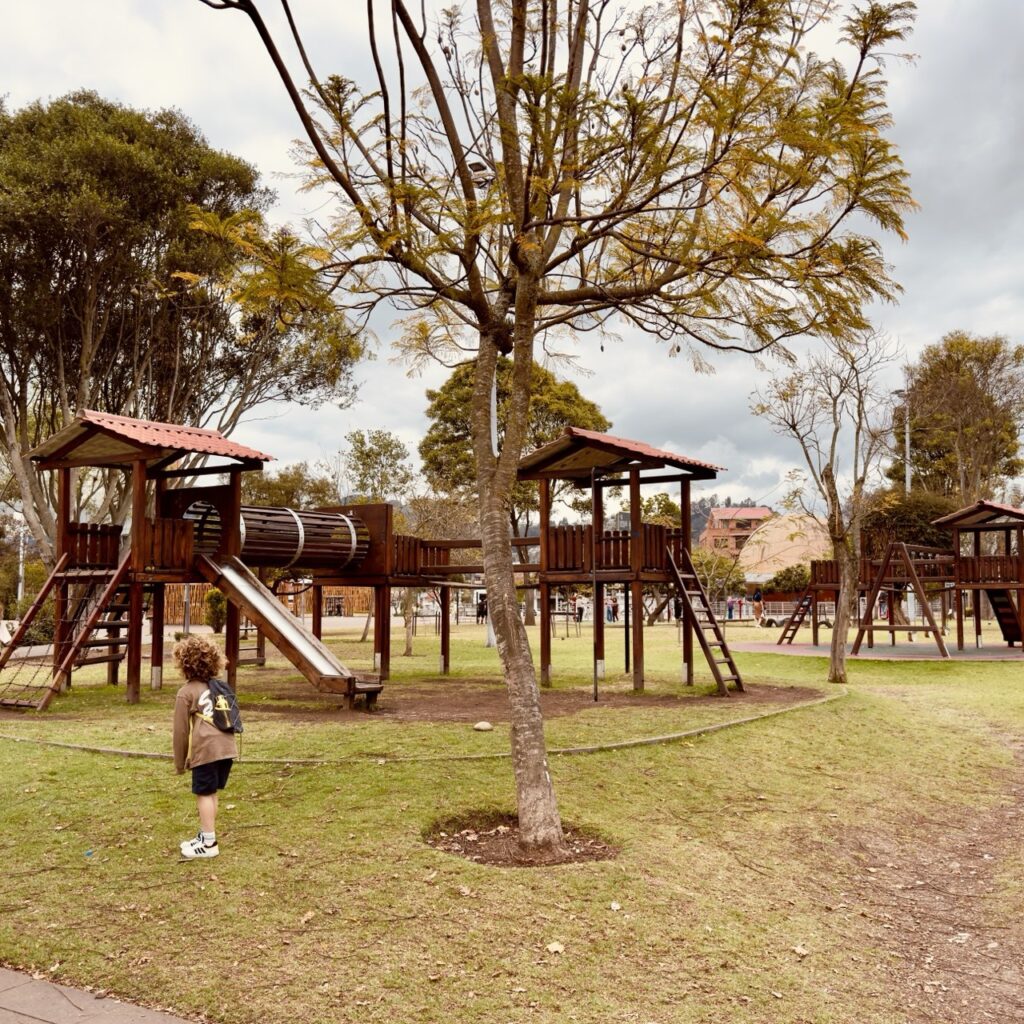
Cuenca has a secret most visitors miss: Pumapungo Museum and Archaeological Park. Free entry, wide lawns, aviary, and ancient terraces where kids can run without side-eye from staff.
The museum inside is small but surprisingly good, masks, textiles, and a model of an Incan village that somehow captivates even five-year-olds.
Afterward, grab a snack near the river. Cuenca runs on cafés, and most have a kid corner or at least friendly staff who’ll chat about the weather until your coffee cools.
Evening: tram ride at sunset, because Cuenca’s light does that cinematic thing around 6 p.m. You’ll feel like you’ve wandered onto a postcard.
Day 14 – Last Day Options
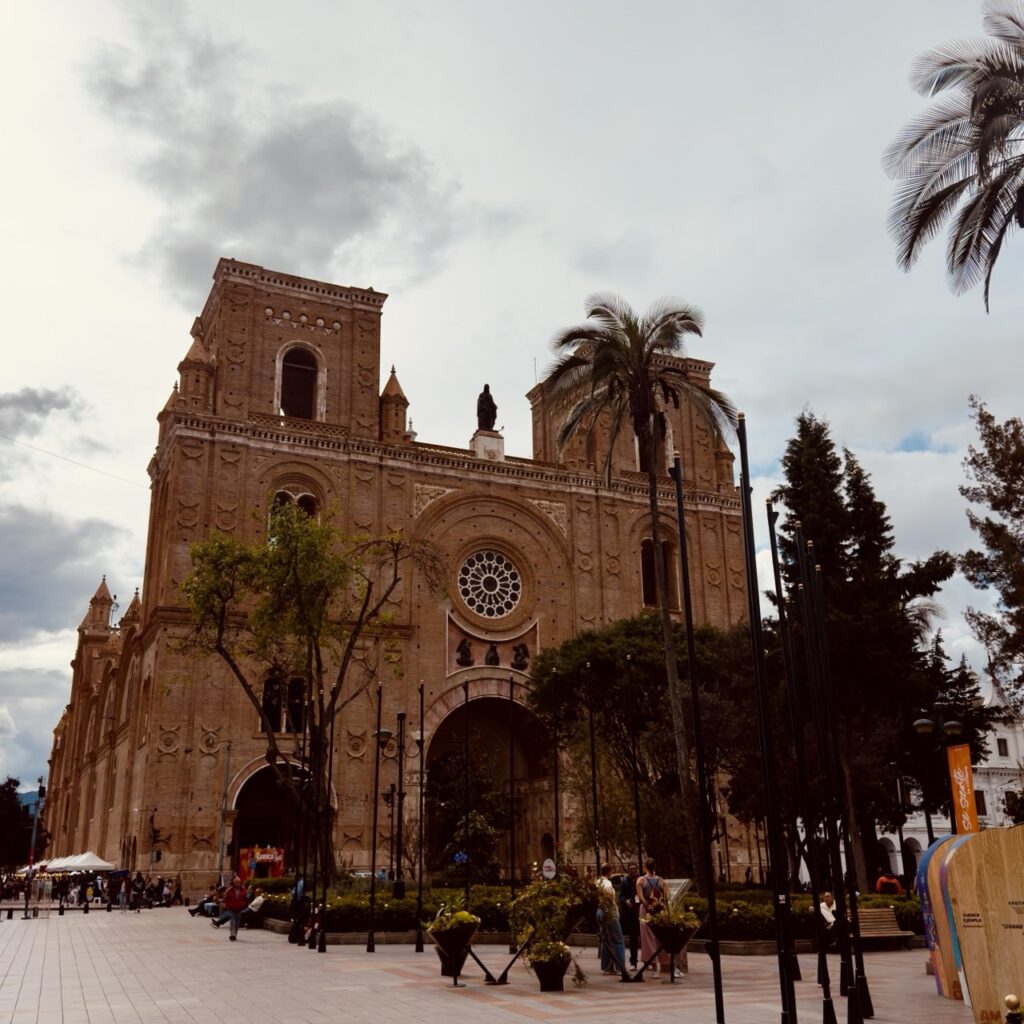
Two routes here, depending on your family’s energy reserves.
Option 1 – Cajas National Park:
Short drive (30–45 minutes). Bring layers, it’s chilly. The hikes loop around glacial lakes and rolling hills, surreal, open, endlessly photogenic. Even a 30-minute walk feels like an expedition.
Option 2 – Slow Day in the City:
Tram to Parque de la Madre, grab pastries, feed pigeons, and watch street musicians. No agenda. Let the trip end the way it began, slowly, with snacks.
Dinner somewhere near the river. Toast the fact that you pulled off two weeks of Ecuador with your sanity mostly intact.
Where to Eat in Cuenca
- El Nuevo Paraíso: legendary almuerzos.
Goza Espresso Bar: people-watching and solid cappuccinos.
La Fornace: pizza when everyone’s done pretending to be cultural.
Fruit stands: everywhere, cheap, colorful, irresistible.
Where to Sleep in Cuenca
Stay near the Río Tomebamba if you can. It’s quieter, walkable, and close to everything.
Old colonial hotels for charm; modern apartments if you’re washing socks in the sink.
By this point, Ecuador starts feeling smaller. Familiar. You know which juice to order, which coins to keep, how to spot a good bakery from across the street. The kids start saying “gracias” without prompting. You start believing this pace, this slower, lighter way of being, might actually be sustainable.
Also Read: Things To Do In Cuenca Ecuador With Kids
Travelling Around Ecuador
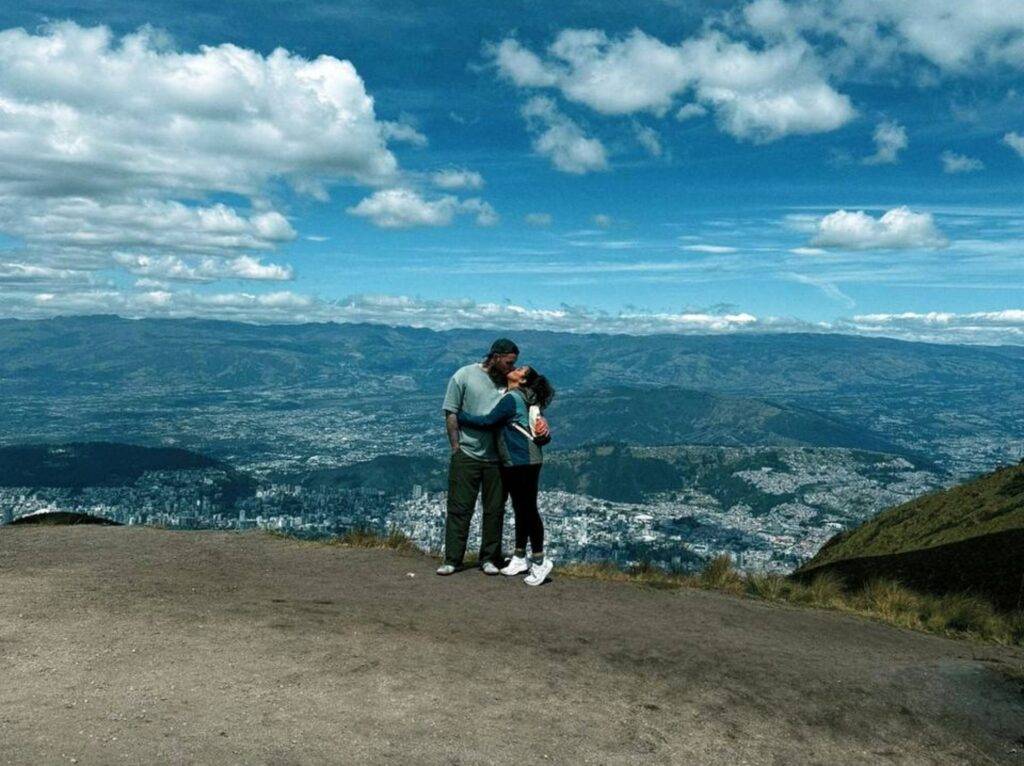
Getting around Ecuador isn’t complicated; it’s just… unhurried (No way as mental as Peru) Buses rule the country, taxis fill the gaps, and ride-share apps make cities easier than you’d expect. The trick is knowing when to splurge and when to let time do its thing.
Here’s the honest version:
Quito → Mindo
Distance: ~90 km
Time: 2–2.5 hours
How: Frequent buses from Terminal La Ofelia (about $5 pp) or private taxi (~$40–50).
Kid note: Sit near the front. The curves are no joke, and motion sickness tablets aren’t optional.
Arrival: Mindo’s terminal is basically a parking lot. Have your accommodation’s number ready, most will send a pickup.
Mindo → Baños
Distance: ~250 km
Time: 5–6 hours total (via Quito or Los Bancos transfer).
How: The easiest route is Mindo → Quito (bus) → Baños (another bus). Book the Baños leg ahead on weekends.
Tip: Pack snacks before leaving Mindo. Once you hit the junction towns, the food options get creative but not always kid-friendly.
Baños → Cuenca
Distance: ~320 km
Time: 6–8 hours
How: Direct buses run daily (check at Baños Terminal Terrestre), or break the trip with an overnight in Riobamba or Alausí.
Reality check: It’s a long day. Morning departure, scenic nap, late-day arrival. Bring downloaded shows and low expectations.
General Transport Tips
Ride-sharing apps (Cabify, Uber) work in major cities.
Buses are cheap and safe, just keep valuables with you, not under the seat.
Offline maps (Maps.me) save your sanity when data cuts out in the mountains.
eSIMs like Airalo or Nomad simplify everything, we paid about $9 for 3 GB, good across multiple provinces.
Our Budget Breakdown
Ecuador is one of those countries where your daily spend flexes with your rhythm.
You can go cheap and cheerful, or spend a little for comfort and still feel like you’re winning.
Here’s what we actually spent (family of four):
| Category | Average / Day | Notes |
|---|---|---|
| Accommodation | $35–60 | Apartments, guesthouses, occasional eco-stay |
| Food | $25–40 | Menú del día lunches + market fruit + bakery dinners |
| Transport | $10–20 | Buses + taxis + the odd splurge ride |
| Activities | $10–25 | Cable cars, entry fees, chocolate tours, etc. |
| Total: | $60–110/day | Sweet spot for comfort + sanity |
Ways to stretch it further:
Eat local: Menú del día lunches beat restaurants every time.
Book weekly stays: Apartments often drop prices 15–20 % for longer stays.
Spend smart: Pay extra for the Teleférico, waterfall tours, or night walks, skip the overpriced “extreme swing” photo ops.
Altitude Tips We Wish We Knew
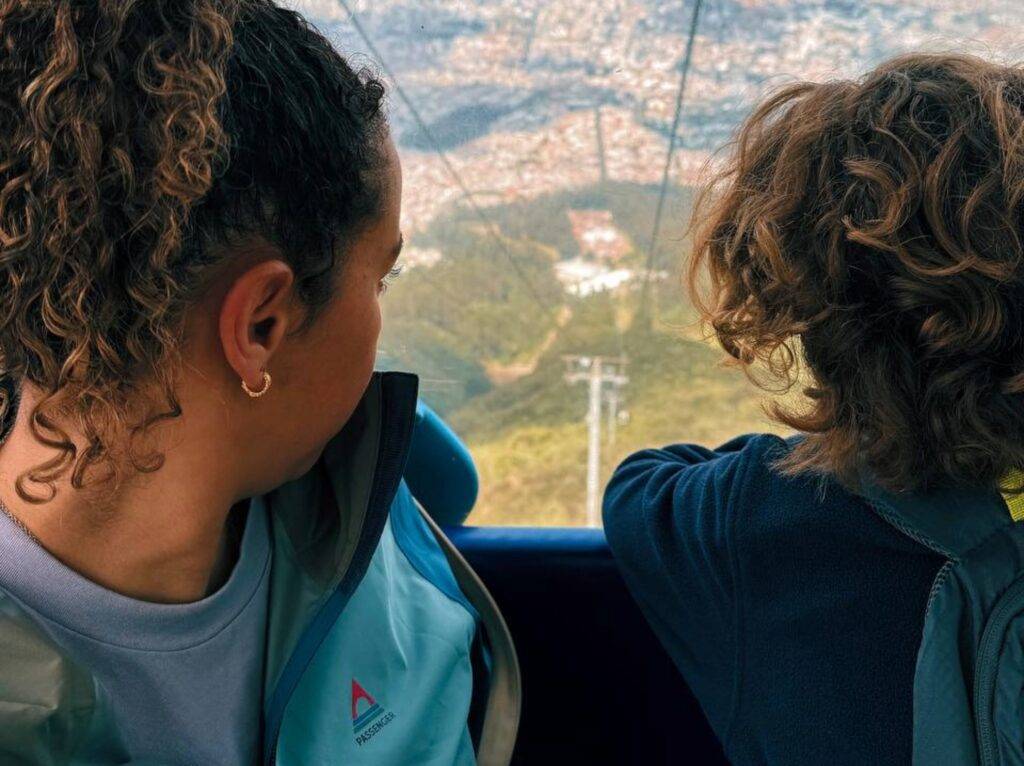
The Andes don’t care how fit you think you are. Start slow, stay hydrated, and listen to your body.
First 48–72 hours: no big hikes. Just gentle exploring.
Hydration: water + electrolytes daily (you’ll sweat less but dehydrate faster).
Meals: keep dinners light. Heavy starch + altitude = restless night.
Sun: stronger than it looks, hats and sunscreen are non-negotiable.
Medicine kit: kids’ pain relief, rehydration sachets, bug spray, motion sickness tabs.
Filter bottle: cuts waste and chlorine taste. We used a Lifestraw Go; worth it.
What the Kids Loved Most
Mindo: butterflies and chocolate tours.
Baños: cable cars, zip-lines, and that “giant waterfall roar.”
Cuenca: pigeons, tram rides, and parks that don’t judge loud laughter.
Quito: Teleférico views and ice cream near La Carolina.
Short bursts beat long museums. Every time.
Packing Tips For Central Ecuador Route
Think layers and logic.
Light fleece, waterproof jacket, closed shoes with grip, quick-dry clothes, buff, sunglasses, and a small meds kit.
Ecuador is a lot more rainier than we expected, Mindo and Baños especially
Forget the stroller, cobblestones and buses will eat it alive. Bring a soft carrier or foldable travel seat instead.
Family sanity kit: snacks, audiobooks, one toy per kid, and a power bank that actually works.
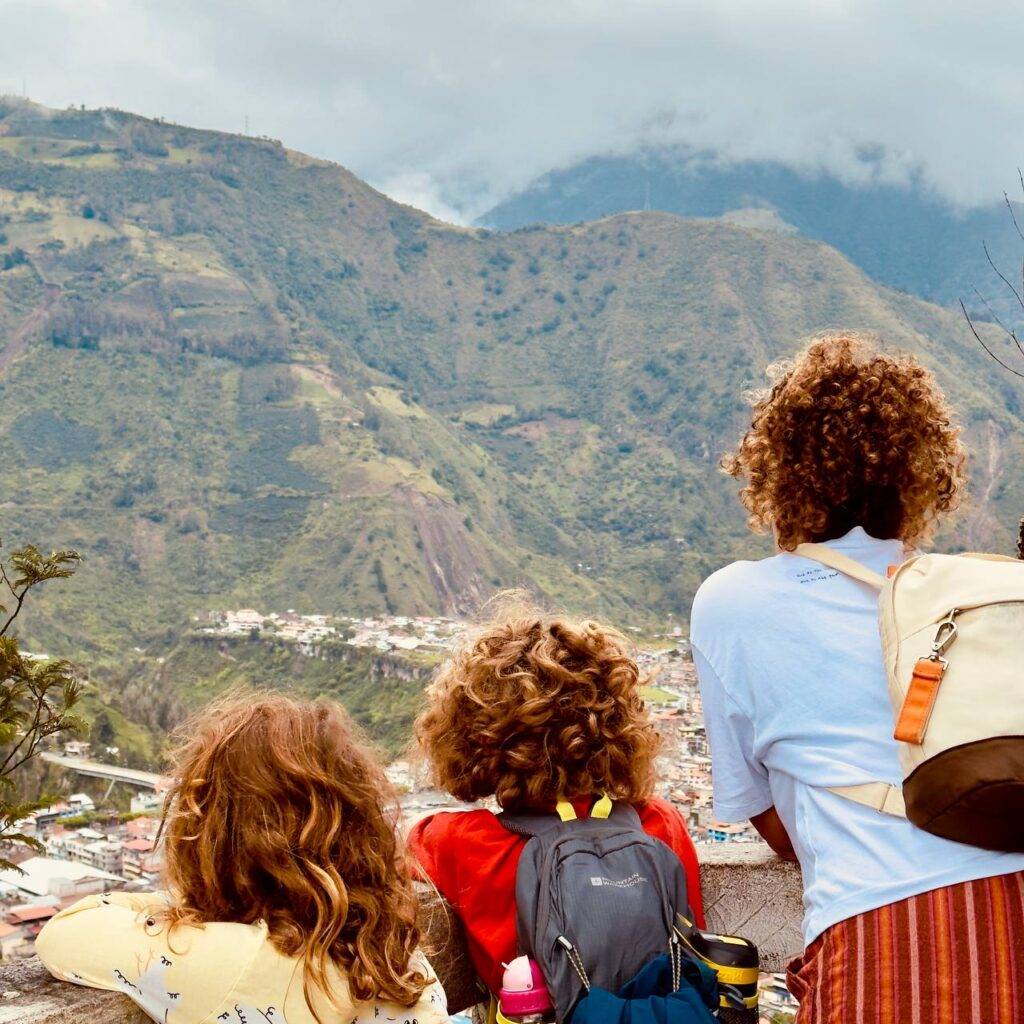
FAQs
Is Ecuador safe for families right now?
Yes, with common sense. Stick to well-traveled routes inland, avoid late-night bus terminals, and keep your bag zipped.
Can kids handle the altitude?
Mostly yes. Acclimatize gradually, Quito first, Mindo next.
What’s a realistic family budget?
$60–110 a day for comfort, less if you cook and skip extras.
Do we need Spanish?
A little goes a long way. “Cuánto cuesta?” and “agua sin gas” will get you far.
Is this stroller-friendly?
Barely. Carriers or foldable backpack seats win every time.
Ecuador 2 Week Itinerary For Families Final Thoughts
Two weeks inland and Ecuador gets under your skin. It’s the pace, the warmth, the way strangers smile at tired kids like they understand. You’ll leave with muddy shoes, a camera full of waterfalls, and that small, stubborn thought, maybe we could keep going.
Your adventure starts with a bus ticket and a good attitude. The rest, you’ll figure out as you go.
Also Read: Cost Of Living In Ecuador 2025

